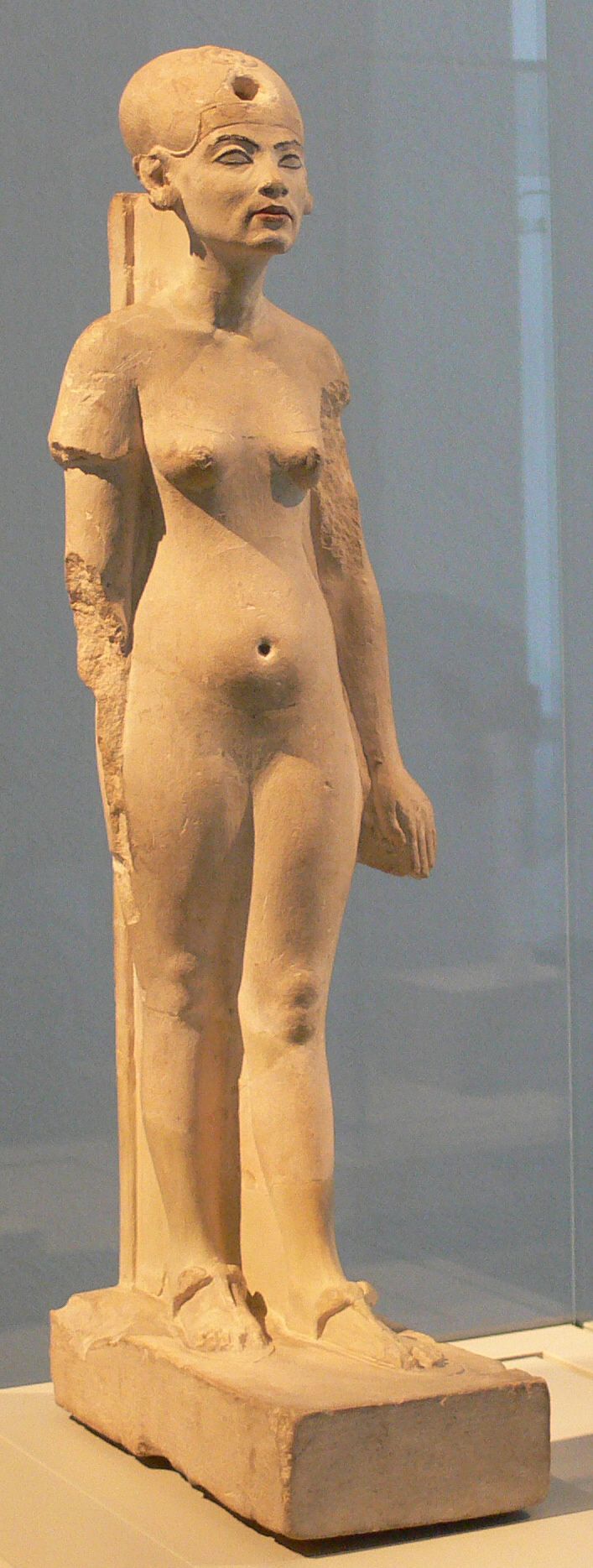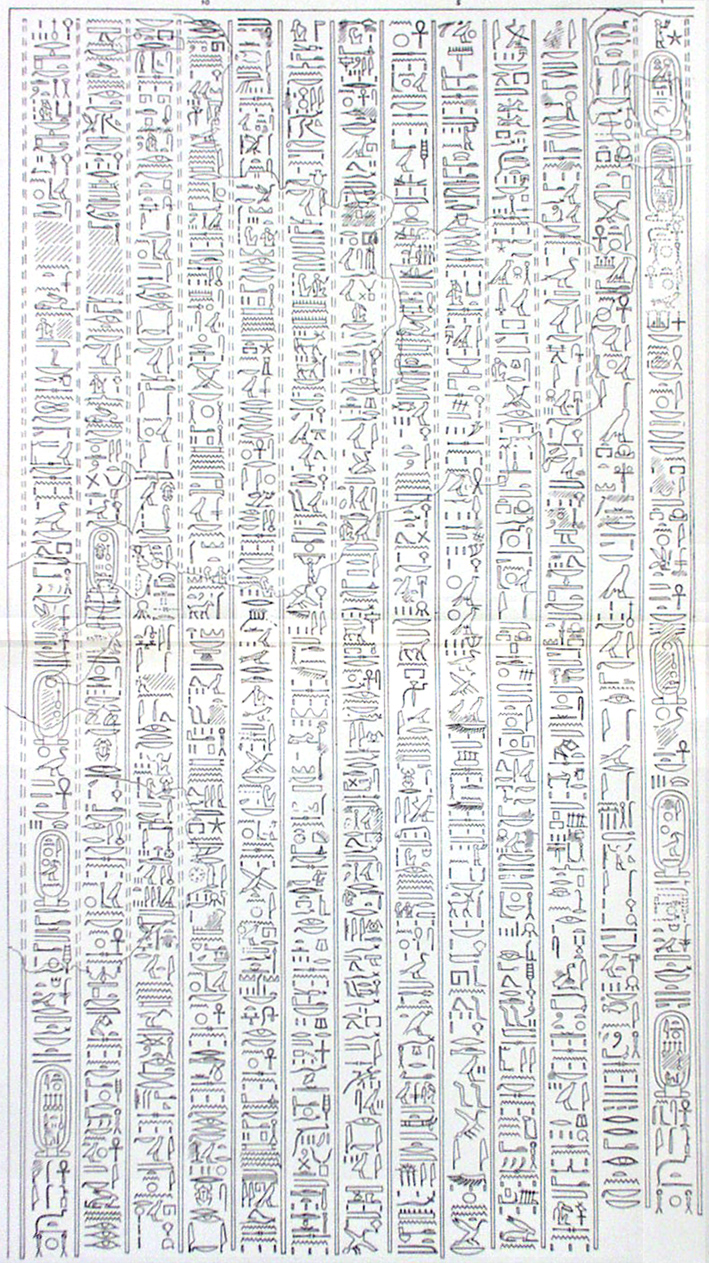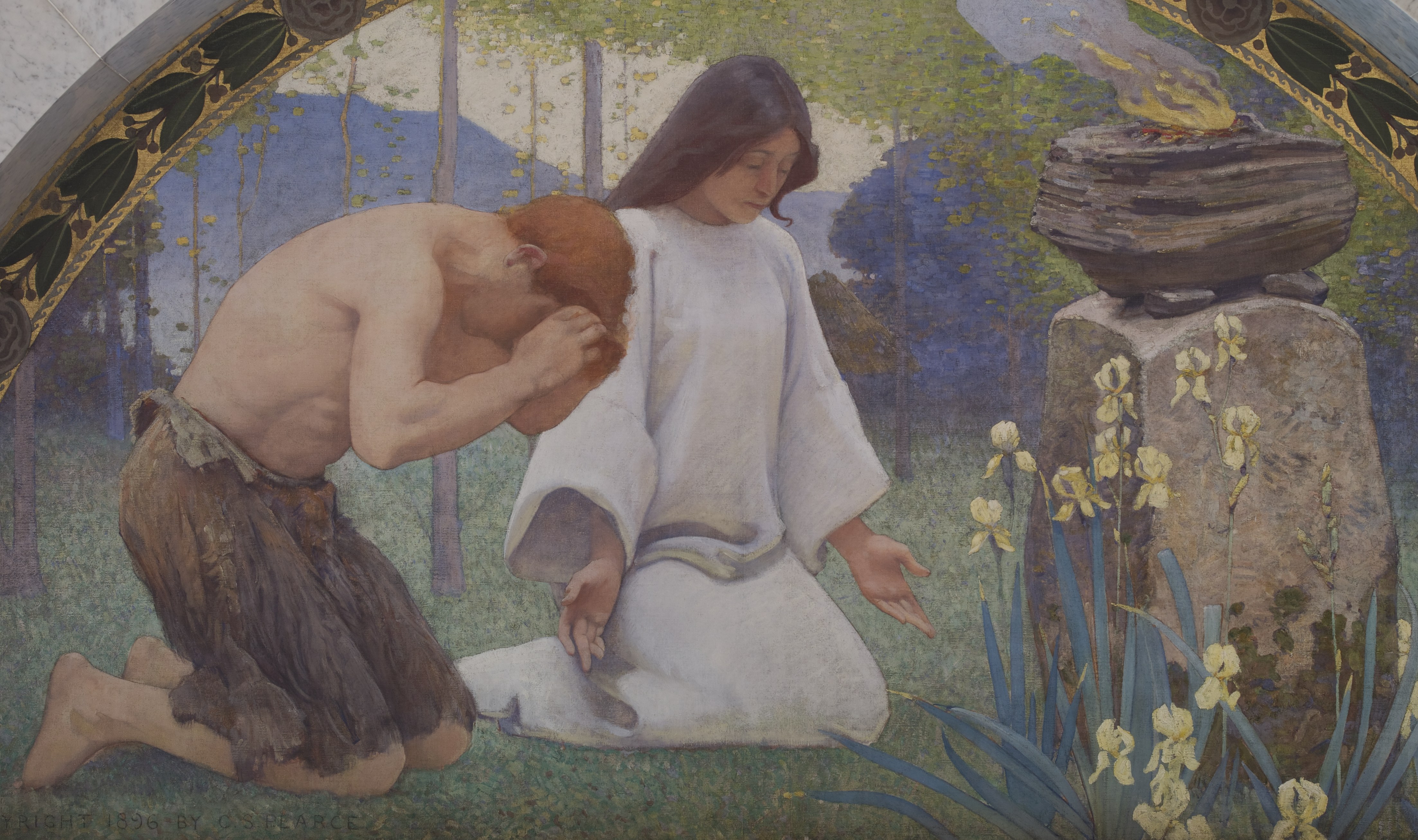|
Monolatry
Monolatry ( grc, μόνος, monos, single, and grc, λατρεία, latreia, worship, label=none) is the belief in the existence of many gods, but with the consistent worship of only one deity. The term ''monolatry'' was perhaps first used by Julius Wellhausen. Monolatry is distinguished from monotheism, which asserts the existence of only one god, and henotheism, a religious system in which the believer worships one god without denying that others may worship different gods with equal validity. Atenism The pharaoh Akhenaten, who was initially enthroned as Amenhotep IV, initially introduced Atenism in the fifth year (approximately 1348–1346 BCE) of his reign during the Eighteenth Dynasty of Egypt. He raised Aten, once a relatively obscure solar deity representing the disk of the Sun, to the status of supreme deity in ancient Egyptian religion. The fifth year of his reign marked the beginning of his construction of a new capital, ''Akhetaten'' (Horizon of the Aten), at ... [...More Info...] [...Related Items...] OR: [Wikipedia] [Google] [Baidu] |
Henotheism
Henotheism is the worship of a single, supreme god that does not deny the existence or possible existence of other deities. Friedrich Schelling (1775–1854) coined the word, and Friedrich Welcker (1784–1868) used it to depict primitive monotheism among ancient Greeks. Max Müller (1823–1900), a German philologist and orientalist, brought the term into wider usage in his scholarship on the Indian religions, particularly Hinduism whose scriptures mention and praise numerous deities as if they are one ultimate unitary divine essence. Müller made the term central to his criticism of Western theological and religious exceptionalism (relative to Eastern religions), focusing on a cultural dogma which held "monotheism" to be both fundamentally well-defined and inherently superior to differing conceptions of God. Definition and terminology Friedrich Schelling coined the German term ''Henotheismus'' and German ''Theismus'' 'theism' (which comes ). The term ref ... [...More Info...] [...Related Items...] OR: [Wikipedia] [Google] [Baidu] |
Monotheism
Monotheism is the belief that there is only one deity, an all-supreme being that is universally referred to as God. Cross, F.L.; Livingstone, E.A., eds. (1974). "Monotheism". The Oxford Dictionary of the Christian Church (2 ed.). Oxford: Oxford University Press. A distinction may be made between exclusive monotheism, in which the one God is a singular existence, and both inclusive and pluriform monotheism, in which multiple gods or godly forms are recognized, but each are postulated as extensions of the same God. Monotheism is distinguished from henotheism, a religious system in which the believer worships one God without denying that others may worship different gods with equal validity, and monolatrism, the recognition of the existence of many gods but with the consistent worship of only one deity. The term '' monolatry'' was perhaps first used by Julius Wellhausen. Monotheism characterizes the traditions of Bábism, the Baháʼí Faith, Cheondoism, Christianity,Christ ... [...More Info...] [...Related Items...] OR: [Wikipedia] [Google] [Baidu] |
Akhenaten
Akhenaten (pronounced ), also spelled Echnaton, Akhenaton, ( egy, ꜣḫ-n-jtn ''ʾŪḫə-nə-yātəy'', , meaning "Effective for the Aten"), was an ancient Egyptian pharaoh reigning or 1351–1334 BC, the tenth ruler of the Eighteenth Dynasty. Before the fifth year of his reign, he was known as Amenhotep IV ( egy, jmn-ḥtp, links=no, meaning " Amun is satisfied", Hellenized as ''Amenophis IV''). As a pharaoh, Akhenaten is noted for abandoning Egypt's traditional polytheism and introducing Atenism, or worship centered around Aten. The views of Egyptologists differ as to whether the religious policy was absolutely monotheistic, or whether it was monolatry, syncretistic, or henotheistic. This culture shift away from traditional religion was reversed after his death. Akhenaten's monuments were dismantled and hidden, his statues were destroyed, and his name excluded from lists of rulers compiled by later pharaohs. Traditional religious practice was gradually resto ... [...More Info...] [...Related Items...] OR: [Wikipedia] [Google] [Baidu] |
Atenism
Atenism, the Aten religion, the Amarna religion, or the "Amarna heresy" was a religion and the religious changes associated with the ancient Egyptian Eighteenth Dynasty pharaoh Akhenaten. The religion centered on the cult of the god Aten, depicted as the disc of the Sun and originally an aspect of the traditional solar deity Ra. In the 14th century BC, Atenism was Egypt's state religion for about 20 years, before subsequent rulers returned to the traditional polytheistic religion and the pharaohs associated with Atenism were erased from Egyptian records. History of Aten before Akhenaten The word ''Aten'' ( egy, jtn), meaning "circle," "disc," and later "sun disc," is first found in the 24th century BC Abusir Papyri, discovered in the mortuary temple of the Fifth Dynasty pharaoh Neferirkare Kakai. Aten, the god of Atenism, first appears as a god in texts dating to the Twelfth Dynasty, in the '' Story of Sinuhe''. During the Middle Kingdom, Aten "as the sun disk... ... [...More Info...] [...Related Items...] OR: [Wikipedia] [Google] [Baidu] |
Nefertiti
Neferneferuaten Nefertiti () ( – c. 1330 BC) was a queen of the 18th Dynasty of Ancient Egypt, the great royal wife of Pharaoh Akhenaten. Nefertiti and her husband were known for a radical change in national religious policy, in which they promoted a form of proto- monotheism centred on the sun god Aten. With her husband, she reigned at what was arguably the wealthiest period of ancient Egyptian history. Some scholars believe that Nefertiti ruled briefly as Neferneferuaten after her husband's death and before the ascension of Tutankhamun, although this identification is Neferneferuaten#Nefertiti, a matter of ongoing debate.Dodson, Aidan, Amarna Sunset: ''Nefertiti, Tutankhamun, Ay, Horemheb, and the Egyptian Counter-Reformation''. The American University in Cairo Press. 2009, . If Nefertiti did rule as Pharaoh, her reign was marked by the fall of Amarna and relocation of the capital back to the traditional city of Thebes, Egypt, Thebes. She was made famous by Nefe ... [...More Info...] [...Related Items...] OR: [Wikipedia] [Google] [Baidu] |
Ancient Egyptian Religion
Ancient Egyptian religion was a complex system of polytheistic beliefs and rituals that formed an integral part of ancient Egyptian culture. It centered on the Egyptians' interactions with many deities believed to be present in, and in control of the world. Rituals such as prayer and offerings were provided to the gods to gain their favor. Formal religious practice centered on the pharaohs, the rulers of Egypt, believed to possess divine powers by virtue of their positions. They acted as intermediaries between their people and the gods, and were obligated to sustain the gods through rituals and offerings so that they could maintain Ma'at, the order of the cosmos, and repel Isfet, which was chaos. The state dedicated enormous resources to religious rituals and to the construction of temples. Individuals could interact with the gods for their own purposes, appealing for help through prayer or compelling the gods to act through magic. These practices were distinct from, but ... [...More Info...] [...Related Items...] OR: [Wikipedia] [Google] [Baidu] |
Aten
Aten also Aton, Atonu, or Itn ( egy, jtn, ''reconstructed'' ) was the focus of Atenism, the religious system established in ancient Egypt by the Eighteenth Dynasty pharaoh Akhenaten. The Aten was the disc of the sun and originally an aspect of Ra, the sun god in traditional ancient Egyptian religion. Akhenaten, however, made it the sole focus of official worship during his reign. In his poem "Great Hymn to the Aten", Akhenaten praises Aten as the creator, giver of life, and nurturing spirit of the world. Aten does not have a creation myth or family but is mentioned in the ''Book of the Dead''. The worship of Aten was initially dismantled by Tutankhamun and later eradicated by Tutankhamun's former military general Horemheb. Etymology and origin The word ''Aten'' appears in the Old Kingdom as a noun meaning "disc" which referred to anything flat and circular; the sun was called the "disc of the day" where Ra was thought to reside. By analogy, the term "silver aten" was s ... [...More Info...] [...Related Items...] OR: [Wikipedia] [Google] [Baidu] |
Josiah Hearing The Book Of The Law
Josiah ( or ) or Yoshiyahu; la, Iosias was the 16th king of Judah (–609 BCE) who, according to the Hebrew Bible, instituted major religious reforms by removing official worship of gods other than Yahweh. Josiah is credited by most biblical scholars with having established or compiled important Hebrew scriptures during the " Deuteronomic reform" which probably occurred during his rule. Josiah became king of the Kingdom of Judah at the age of eight, after the assassination of his father, King Amon. Josiah reigned for 31 years, from 641/640 to 610/609 BCE. Josiah is known only from biblical texts; no reference to him exists in other surviving texts of the period from Egypt or Babylon, and no clear archaeological evidence, such as inscriptions bearing his name, has ever been found. Nevertheless, most scholars believe that he existed historically and that the absence of documents is due to few documents of any sort surviving from this period, and to Jerusalem having been occupie ... [...More Info...] [...Related Items...] OR: [Wikipedia] [Google] [Baidu] |
John Day (Old Testament Scholar)
John Day (born 13 September 1948) is an English Old Testament scholar. He held the Title of Distinction of Professor of Old Testament Studies in the Faculty of Theology at the University of Oxford (2004–13). He is the editor of ''In Search of Pre-Exilic Israel'' (2004) and wrote ''God's Conflict with the Dragon and the Sea'' (1985), ''Yahweh and the Gods and Goddesses of Canaan'' (2000), and ''From Creation to Babel: Studies in Genesis 1–11'' (2013). He was Fellow, Tutor in Theology, and Dean of Degrees at Lady Margaret Hall Lady Margaret Hall (LMH) is one of the constituent colleges of the University of Oxford in England, located on the banks of the River Cherwell at Norham Gardens in north Oxford and adjacent to the University Parks. The college is more formally .... He was elected to an emeritus fellowship at Lady Margaret Hall in 2013. Works Books * * * * * * * * * References Lady Margaret HallDebrett's Biography External links Lady Margaret Hall 1948 bir ... [...More Info...] [...Related Items...] OR: [Wikipedia] [Google] [Baidu] |
Worship
Worship is an act of religious devotion usually directed towards a deity. It may involve one or more of activities such as veneration, adoration, praise, and praying. For many, worship is not about an emotion, it is more about a recognition of a God or gods. An act of worship may be performed individually, in an informal or formal group, or by a designated leader. Such acts may involve honoring. Etymology The word is derived from the Old English weorþscipe, meaning ''to venerate "worship, honour shown to an object'',Bosworth and Toller, Anglo-Saxon Dictionary,weorþscipe which has been etymologised as "''worthiness'' or ''worth-ship"''—to give, at its simplest, worth to something. Worship in various religions Buddhism Worship in Buddhism may take innumerable forms given the doctrine of skillful means. Worship is evident in Buddhism in such forms as: guru yoga, mandala, thanka, yantra yoga, the discipline of the fighting monks of Shaolin, panchamrita, mantr ... [...More Info...] [...Related Items...] OR: [Wikipedia] [Google] [Baidu] |
Great Hymn To The Aten
The Great Hymn to the Aten is the longest of a number of hymn-poems written to the sun-disk deity Aten. Composed in the middle of the 14th century BC, it is varyingly attributed to the 18th Dynasty Pharaoh Akhenaten or his courtiers, depending on the version, who radically changed traditional forms of Egyptian religion by replacing them with Atenism. Background The hymn-poem provides a glimpse of the religious artistry of the Amarna period expressed in multiple forms encompassing literature, new temples, and in the building of a whole new city at the site of present-day Amarna as the capital of Egypt. Egyptologist Toby Wilkinson said that "It has been called 'one of the most significant and splendid pieces of poetry to survive from the pre-Homeric world. Egyptologist John Darnell asserts that the hymn was sung. Various courtiers' rock tombs at Amarna (ancient Akhet-Aten, the city Akhenaten founded) have similar prayers or hymns to the deity Aten or to the Aten and Akhen ... [...More Info...] [...Related Items...] OR: [Wikipedia] [Google] [Baidu] |
_(Musée_du_Caire)_(2076972086).jpg)




